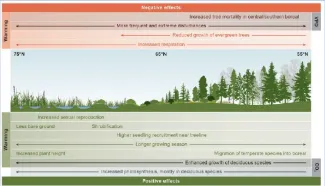Analysis highlights the challenges and opportunities for reducing model uncertainty associated with estimation of gross primary productivity in the Arctic boreal region.
The Arctic boreal region is a significant source of uncertainty in estimates of carbon uptake in terrestrial biosphere models, such that reducing this uncertainty is critical to more accurately estimate global carbon cycling and understand the response of the region to global changes. Process representation and parameterization associated with gross primary productivity (GPP) drives a large amount of this model uncertainty, particularly within the next 50 years, in which the response of existing vegetation to climate change will dominate estimates of GPP for the region. The current understanding and model representation of GPP in northern latitudes were reviewed, focusing on vegetation composition, phenology, and physiology, and considering how climate change alters these three components. The challenges in the Arctic boreal region that hinder accurate prediction of GPP were highlighted, along with the unique opportunities for advancing knowledge and model representation, particularly through the combination of remote sensing and traditional boots-on-the-ground science. Remote sensing, coupled with field measurements and the use of unoccupied aerial systems provides an opportunity to improve understanding and model representation of species composition, phenology, and scale to physiological understanding. Process knowledge associated with GPP—with some exceptions, such as representation of quantum yield—is well advanced, but physiological studies are needed to improve parameterization of vegetation in the region. The low species diversity, particularly in the boreal region, presents a major opportunity to provide comprehensive parameterization for the biome. Finally, manipulative experiments or exploitation of environmental gradients will be essential for understanding the acclimation and climate sensitivity of different plant functional types to rising temperature, CO2 concentration, and vapor pressure deficit. Without understanding the potential for acclimation, we risk parameterizing plant functional types by looking in the rearview mirror. Accurate models require climate-smart plant functional types that include model representation of their variable sensitivities to global changes.
Citation: Rogers, A., S. P. Serbin, and D. A. Way. 2022. “Reducing model uncertainty of climate change impacts on high latitude carbon assimilation.” Global Change Biology 28: 1222–1247. https://doi.org/10.1111/gcb.15958.


